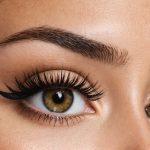Essential Tips for Safe At-Home Hair Bleaching
Embarking on at-home hair bleaching might seem daunting, but with the right at-home hair bleaching tips, it can be a manageable process.
Prior to starting, conducting a patch test is crucial. This simple step can help identify any potential allergic reactions from the chemicals in the bleach. Perform the test 48 hours before applying the bleach to your entire head. Apply a small amount of the bleach mixture on your inner elbow, wait, and look for any irritation or redness.
Also read : Essential tactics to combat and heal hair breakage: your comprehensive resource
Next, choose the right bleach and developer strength. These play a critical role in achieving your desired shade while minimizing damage. Developers come in different volumes, with higher numbers offering more lift but also increasing the risk of damage. Volumes 20 and 30 are commonly used for at-home bleaching.
Ensuring your hair’s health and condition is key before bleaching. Preparing hair for bleaching involves assessing its current state. Deep conditioning treatments in the weeks leading up to bleaching can help strengthen the hair. If your hair is excessively damaged, it may be wise to postpone bleaching until it’s in better condition. Following these tips will prepare you for a successful and safe at-home hair bleaching experience.
Also read : Ultimate guide for newbies: seamlessly achieve flawless false eyelash application
Step-by-Step Bleaching Process
Embark on your at-home hair bleaching process with structured steps for success.
Preparing Your Hair for Bleaching
Begin by ensuring your hair is ready for the transformation. Follow the previously mentioned tips for prepping your hair, such as assessing its health and applying deep conditioning treatments. Healthy hair provides the best base for even and vibrant results.
Mixing the Bleach and Developer
For effective bleaching, mix the bleach and developer accurately. You’ll typically blend them in a 1:2 ratio, depending on the product’s instructions. Ensure a smooth mixture to avoid patchy application. This step requires precision, so take your time to achieve the correct consistency.
Application Techniques
-
Even distribution is crucial for consistent results across your hair. Divide your hair into manageable sections using clips, and apply starting from the tips, working towards the roots.
-
Use recommended tools such as a dye brush and a plastic bowl for ease of application. These enable a more controlled and efficient process.
-
Timing varies based on your hair type and desired lift. For fine hair, shorter processing times are advisable, while thicker hair might require longer. Always follow manufacture-specific timing guidelines to minimize potential damage.
Safety Precautions
Engaging in a hair bleaching process at home necessitates vigilance regarding potential risks. Key safety tips can safeguard your experience.
First, be attentive to allergic reactions and skin sensitivity. Monitoring your skin’s response post-patch test is essential. Any redness or burning sensation may indicate a problematic reaction to the bleach.
Additionally, always utilize protective gear. Equip yourself with gloves and a cape to prevent skin contact and clothing damage. These precautions help protect your skin from the harsh chemicals in bleach.
Proper ventilation cannot be overstated. Ensure you’re working in a well-ventilated area to minimize inhalation of fumes. Open windows or use a fan to keep air circulating, reducing potential respiratory discomfort.
Finally, maintain neatness in your surrounding area. Cover surfaces with old towels or newspapers to avoid staining or damaging them with bleach spills. Keep children and pets away to prevent accidental exposure.
Adhering to these safety precautions enhances your bleaching process, reducing risks associated with home hair treatments. When undertaking chemical processes like bleaching, balancing aesthetic goals with safety measures is crucial for a successful, stress-free experience.
Product Recommendations
Navigating the world of hair bleaching products can be overwhelming, given the variety available. Ensuring a successful bleaching experience requires selecting from the best hair bleaching products offered on the market.
Top-rated Bleaching Kits
Choosing a reliable bleaching kit is critical for achieving desirable results. Kits from reputed brands often include everything needed for a hassle-free process, such as bleach powder, developer, and application tools.
Recommended Olaplex for Damage Control
Hair bleaching can weaken hair, making damage control essential. Olaplex is highly recommended for its ability to rebuild hair structure post-bleaching, offering an extra layer of protection.
Affordable vs. Professional Products
When considering professional-grade versus at-home products, weigh the cost and performance. Professional items generally offer superior results but at a higher price. Meanwhile, affordable kits suffice for modest transformations, providing a practical option for newcomers. Some brands are highlighted for their effectiveness in delivering vibrant yet gentle results.
Ultimately, selecting products depends on your hair goals and budget. Professional brands offer higher precision and safer applications for those experienced, whereas simpler kits make at-home bleaching accessible to many. Knowing the strengths of each option empowers users to select with confidence, ensuring a safe and vibrant bleaching journey.
Post-Bleaching Care
Post-bleaching care is vital to maintaining the health and vibrancy of your hair. Prioritising moisturizing and conditioning treatments can combat dryness and brittleness caused by bleaching. Employ deep conditioning masks weekly to infuse moisture, and consider leave-in conditioners for daily hydration.
It’s essential to choose the right products for maintaining hair health. Look for shampoos and conditioners sulfate-free to preserve your new colour, as sulfates can strip your hair of its hue and natural oils. Products labelled for colour-treated hair typically offer ingredients that protect and prolong colour.
Maintaining colour and repairing damage requires diligence. Regular trims help prevent split ends that can arise from bleaching. If you find your colour fading, colour-depositing conditioners can refresh and neutralise tones between salon visits.
Incorporating oils like argan or coconut oil can enhance shine and manage frizz, providing vital nourishment. Additionally, mitigating heat styling and incorporating UV protection products guard against further damage.
By adhering to these hair care after bleaching tips, you extend the life of your bleached hair while ensuring it remains healthy and vibrant. The right care routine promotes resilience, helping your hair thrive despite chemical exposure.
Common FAQs About Hair Bleaching
Embarking on the hair bleaching journey can raise numerous questions. Understanding the core inquiries ensures a safer and more informed experience.
How often can I bleach my hair?
Generally, waiting at least 4-6 weeks between bleaching sessions is recommended. This period allows your hair to recover from the chemical exposure and minimise further damage. The waiting time can vary based on individual hair strength and the prior bleaching impact, emphasising regular hair health assessments.
Will bleaching damage my hair permanently?
Bleaching alters the hair’s structure, potentially leading to dryness and breakage. However, with proper post-bleaching care and consistent moisturising treatments, you can manage and even mitigate these effects. Using sulfate-free products and incorporating nourishing oils help maintain elasticity and shine, preventing long-term damage.
What to do if I experience adverse reactions?
If adverse reactions occur, like itching or excessive burning, it is crucial to rinse the bleach immediately. Refrain from reapplying bleach until consulting a dermatologist for advice on managing reactions and assessing skin sensitivity. Ensuring a patch test before each bleaching is a preventive measure to avoid such outcomes.











